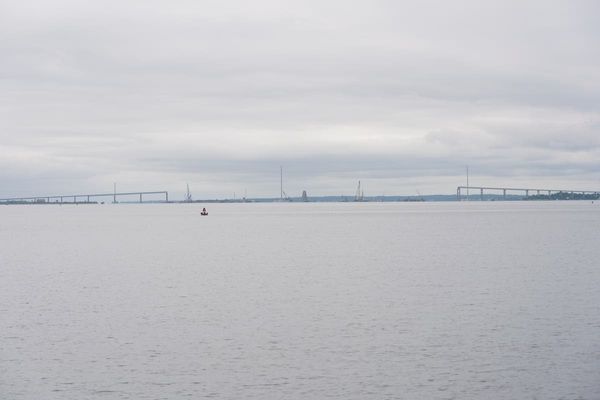
Weather-battered oilskins still hang on the boathouse drying rack; the tools in the mechanic’s workshop are carefully ordered as if ready to be used at any moment; and the service boards recording decades of gallant rescues retain their polished finish.
Forty-two years after the Penlee lifeboat disaster, in which 16 people died including the eight Royal National Lifeboat Institution crew members, the old rescue station at Penlee Point looks much as it did in 1981 and is now to be preserved for the nation.
The building, which closed after the tragedy, and its concrete slipway, have been granted Grade II-listed status, which means they are considered of national importance.
Relatives of those who were based at the station, built into the Cornish cliffs outside the village of Mousehole, welcomed the news and called for it to lead to the station being opened to the public more often.
Neil Brockman, who lost his father, Nigel, in the disaster, said: “It looks exactly the same as when they launched that night. It’s very poignant and it’s important to keep those memories alive.”
Neil was a 17-year-old RNLI volunteer at the time and was keen to go out that night on the lifeboat, Solomon Browne, but was told to stay ashore. “I would like to see it turned into a museum for lifesaving in Mounts Bay. There’s a lot of history,” he said. “The place is mainly remembered for the loss of the Solomon Browne but she saved a lot of lives before that. It’s humbling to look at those boards and see how many times she and the other lifeboats were launched over the years.”
Elaine Bawden, whose father, Nimrod, served on the Penlee lifeboat for 17 years said the building was iconic. “History oozes from its walls,” she said.

Bawden is fond of the service boards. “After every rescue a man would cycle over from Newlyn and add in the details on to them,” she said. She hoped the building, which is privately owned, could be opened more often. “History needs to be shared, not locked away,” she added.
The lifeboat station at Penlee Point was designed by the RNLI engineer and architect William Tregarthen Douglass, a prolific and innovative designer of maritime structures and formally opened in 1913.

On 19 December 1981, the cargo vessel Union Star suffered engine failure on its maiden voyage and in hurricane force winds was driven towards the rocky Cornish coast. Solomon Browne, a wooden lifeboat, was launched in an attempt to save those on board the stricken ship.
Battling 18-metre-high waves, the lifeboat managed to reach the Union Star. It got four people off but rather than returning to shore went back to try to save the others before all contact was lost. The eight crew of the Solomon Browne and the eight onboard the Union Star all died. A helicopter pilot who witnessed the attempted rescue described it as “the greatest act of courage that I have ever seen”.
The loss – and bravery – is remembered each year on 19 December when the Christmas lights at Mousehole are switched off.
In 1983 the Penlee Point station was closed and the base moved to nearby Newlyn to accommodate a more modern lifeboat with the old buildings kept much as they were in 1981, maintained by RNLI volunteers.
Adrian Carey, the head of region for the RNLI in the south-west said: “Standing quietly inside the old Penlee lifeboat station, you can’t help but feel the incredible courage, determination, and selflessness of the crew of the Solomon Browne.
“The listing will help ensure that the building, which stands in testament to the sacrifice the crew made that night, remains as a reminder and comfort to all those connected to Penlee RNLI and the wider RNLI community.”

Duncan Wilson, chief executive of Historic England, said: “These simple and functional structures witnessed a very sad moment in our history. They stand as a focal point for remembering those who lost their lives. The story they tell, as well as the architectural interest of the buildings and the slipway, mean their listing at Grade II is well deserved.”
The heritage minister, Lord Parkinson, said: “Penlee lifeboat station serves as a poignant reminder of the disaster that took place in Cornwall and the brave and noble sacrifice made by the RNLI crew that night. The listing of the station will mean that it can stand in tribute to all those who so sadly lost their lives for generations to come.”







